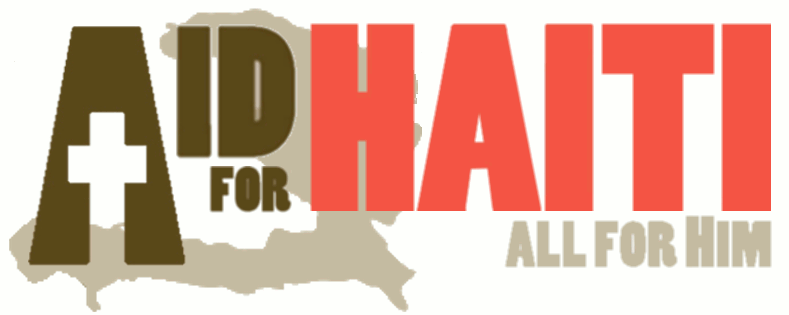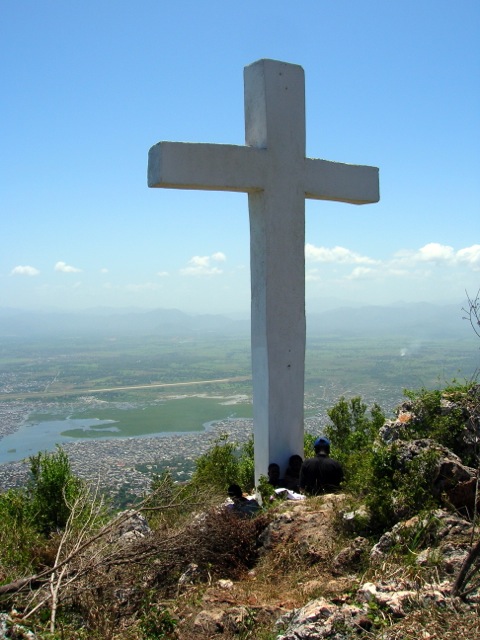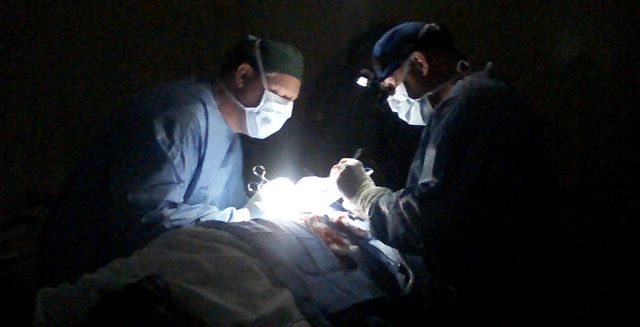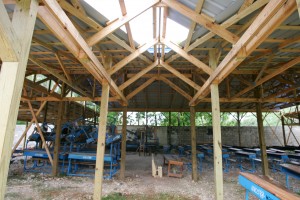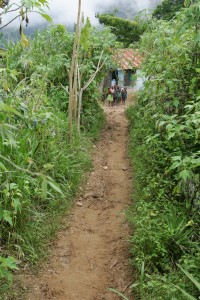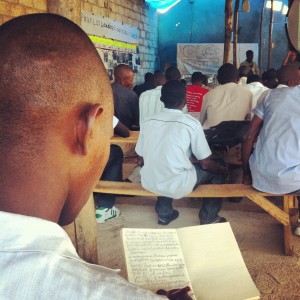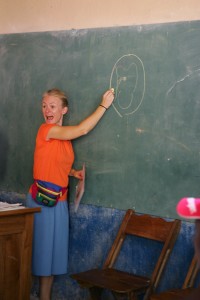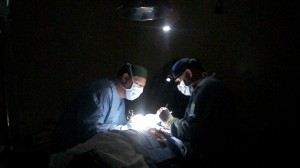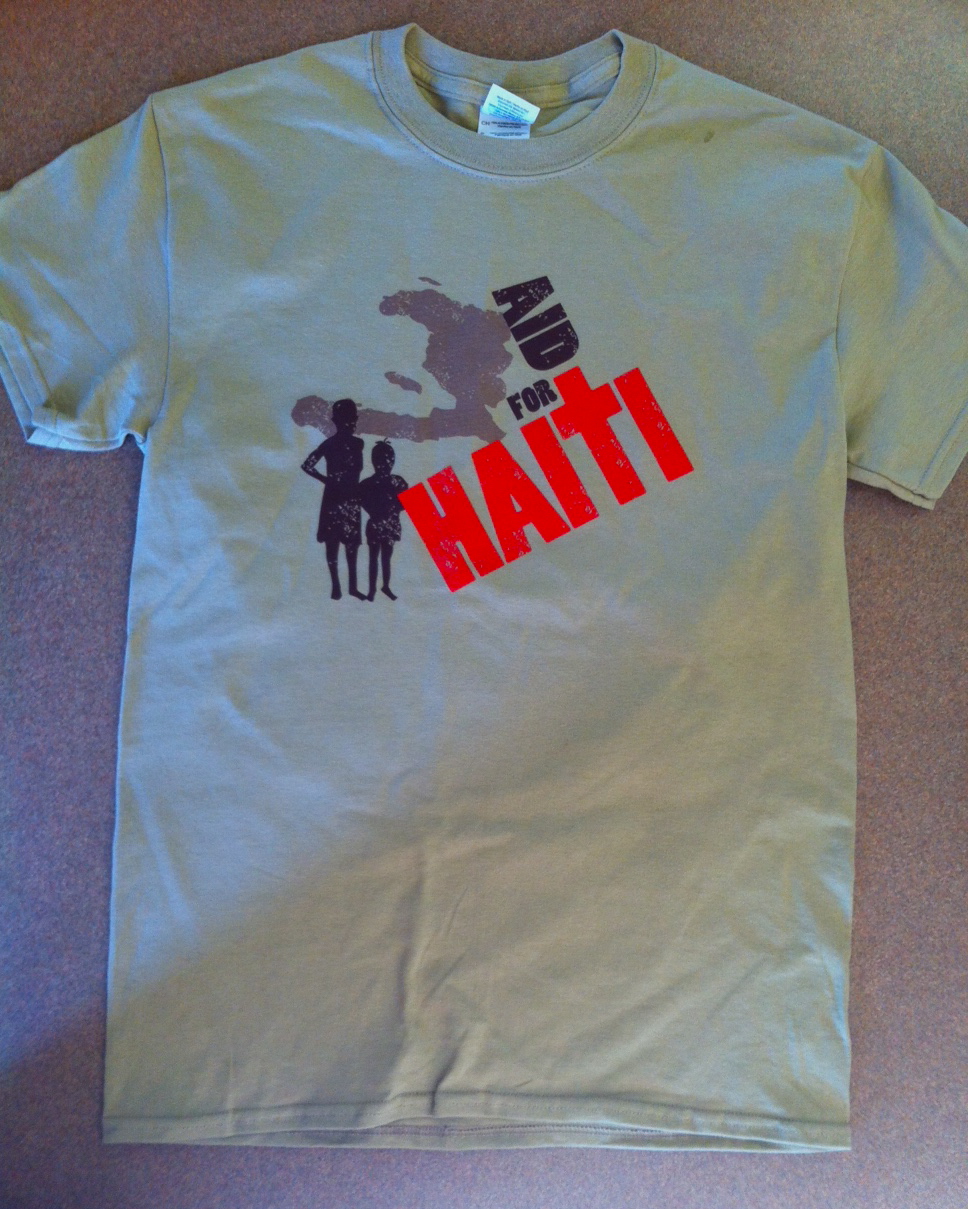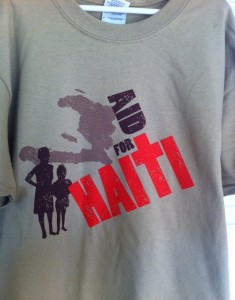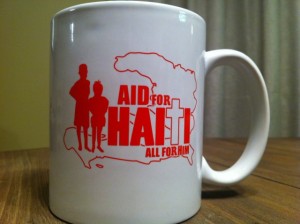Its been said that Haiti is 70% Catholic, 20% Protestant, and 100% Voodoo. While this may be true it only partially tells a riveting story. The story of God working throughout the history of Haiti to spread the life saving message of his son is an utterly fascinating one. The following is a non-experts attempt to tell part of this story.
During Haiti’s early history the Spanish and French both imported slaves from Africa to maximize productivity on the sugar plantations in the colony of Saint Dominique, modern day Haiti. As slaves arrived in the “new world”, they were exposed to new Catholic doctrine and belief. Many adopted aspects of the new catholic practice and combined it with their traditional African spiritualist beliefs, voodoo. Voodoo comes from the Fon language of Benin, West Africa, and means “spirit.” [1] Throughout the early history of Haiti, the slaves endured tremendous hardships at the hands of their captors. As time went on, the slaves african spiritualist beliefs became more a point of pride as Catholicism was increasingly viewed as the religion of the brutal slave holders. Voodoo became a means to communicate and organize to fight for their independence. This peaked during an infamous event in in 1791. According to Haiti’s official bicentennial website the Haitian revolution began on a night in 1791 when “A man named Boukman … organized a meeting with the slaves in the mountains of the North. This meeting took the form of a Voodoo ceremony in Bois Caiman in the northern mountains of the island. It was raining and the sky was raging with clouds; the slaves then started confessing their resentment of their condition. A woman started dancing languorously in the crowd, taken by the spirits of the loas. With a knife in her hand, she cut the throat of a pig and distributed the blood to all the participants of the meeting who swore to kill all the whites on the island.” The revolution that began on this night ended in 1804 with the formation of the world first free slave republic.
Soon after the revolution in Haiti, all foreign priests in the Haitian catholic church fled and Rome cut off all relations. This allowed the early Haitian catholic church to form and change without oversight from the outside church. This in addition to the ritualistic aspects of Catholicism has helped voodoo become pervasive throughout Haitian Catholicism and is why the two often appear to co-exist so easily in a system of religious pluralism. [2] For example, today, many Roman Catholic symbols and prayers have blended with voodoo rituals and traditions to make for a unique and typically Haitian religion. Pictures of Catholic saints are painted on the walls of temples to represent the voodoo spirits; at funerals, it is not uncommon that voodoo ceremonies and rituals be performed for family members first, followed by a more public traditional Roman Catholic ceremony presided over by a priest.” [3]
Soon after the revolution Haiti found itself very isolated politically, racially and religiously from the rest of the world. Early leaders feared that voodoo would further alienate them from the developed world. So, the Constitution of 1807 made Roman Catholicism Haiti’s official religion stating that no other religion (including Voodoo) could be practiced in public. Later, Haiti reestablished relations with the Vatican in 1860 and power over the church in Haiti transferred once again to Europe. All the while influential Haitian voices like Louis Joseph Janvier, insisted Catholicism was an oppressive colonial power and a threat to Haiti’s autonomy. He advocated for the establishment of Protestantism on the grounds that it could be controlled internally rather than by Europe. [4] He did not see voodoo as a solution to Haiti’s problems, and rather saw Protestantism as a means to modernize Haiti, as it encouraged pragmatism and self reliance. [5]
During this time, a few of Haiti’s first protestant missionaries began to arrive. The first protestants missionaries were with the English Wesleyan Mission when a handful of british methodist pastors arrived in 1806. The first American missionary was a Baptist, Thomas Paul, the son of freed slaves from Exeter, New Hampshire. Paul sailed into Cape Hayti (later Cap Haitien) in 1823 with crates of Bibles and tracts, and for six months he preached, baptized, and laid the groundwork for the establishment of the First Baptist Church there. [7] The Episcopal church was introduced in Haiti in 1861 by a group of 110 African-Americans immigrants to Haiti. They established many churches and schools, including St. Vincent School, for many years, the only school for special needs children in Haiti. The adventists arrived later in 1879, Assemblies of God (1945), Nazarean Church (1948), Salvation Army (1950), Pentecostal church (1962), Mennonite Church (1966) [6} and Church of God in Borel, Haiti(1967). [9] The work of the missionaries was initially focused in the larger cities where they found it tough to make any inroads because catholicism had been so deeply entrenched for many years. At the time, Catholicism thrived in urban areas because the majority of the education available was through Catholic schools and typically served the elite and wealthier populations. Protestants failed to gain much ground in urban areas, and thus focused their energies and attentions on poorer, rural areas with remarkable success.
One of the most significant events in in the Haitian church happened in the early 20th century. [10] For many years people from southern Haiti has been emigrating into Cuba and being hired on as farm labor in large sugar cane plantations. At the time, the evangelistic efforts of missionaries was far greater in cuba than in Haiti. Many Cubans had accepted Christ and were traveling the countryside forming churches and evangelizing the people there. In the process many Haitians came to hear of Christ for the first time. After a number of years the Cuban government began cracking down on the Haitian immigrants coming into Cuba. Thousands were deported back the their home in southern Haiti. After deportation these new Christians set to work sharing the gospel throughout the cities and countryside with great success. Evidence of this exists still with some of the highest concentrations of evangelical and protestant believers in Haiti being in the south of the country, where this outreach was initially done. Much of the initial indigenous effort in evangelism was born of this event, as Christianity spread from south to north over the ensuing years. Foreign protestant missionaries began to make significant inroads into Haiti during the same time periods which coincided with the US military occupation of Haiti from 1915-1934. During this time, the rural parts of Haiti began to have its first direct contact with the western world. Soon after the soldiers arrived, missionaries also began to settle in these areas also. Many of these protestant missionaries brought to the disadvantaged in these areas things some had never had, namely, a steady supply of food, clean water, medical care and education badly needed at the time. This helped the message spread rapidly throughout the rural areas. Through both indigenous and foreign missionary means the message of Christ propagated rapidly through Haiti during the fist half for the 20th century.
As the 20th century moved on, protestant missions in Haiti, especially rural Haiti, found a strange supporter. It was in fact championed by the infamous dictator Francois Duvalier, the first pro-voodoo, pro-peasant, black nationalist president. During this time, new fears of cultural imperialism and racism began to foster a reaction against continued foreign influence. Catholicism embodied this fear with thier centralized foreign power structure. Duvalier viewed the rise of Protestantism as help to break the power of the foreign dominated Catholic Church. Duvalier also supported the influx of Protestants because Protestants did not pose any immediate threat to him. Protestants were seen not only as apolitical and unwilling to interfere in political affairs, but they were eager to bring development and aid into the country as well. [8] While using christianity for his own ends, Duvalier continued to encourage voodoo also. Throughout his reign, he used the houngans (voodoo priests) to control the rural communities his personal army (the tonton macoutes) could not police. This was done through fear and intimidation, encouraging threats of voodoo spells and enchantments. The effects and continued use of these fear tactics are a major driver in the lives of the people of the Haitian countryside still today.
Over the last 25 years, since the fall of the Duvalier regime, the religious landscape of Haiti has continued to change. A subversive grassroots group of Catholics called “Ti Legliz” developed to help oust the Duvaliers. This group among many others of the period (early 1990s) championed “Liberation Theology“ coming out of Central America and were far more political than religious. This movement drew widespread support from both the rural and urban poor and prepared the political landscape for the emergence of former Catholic priest, Jean Bertrand Aristide, and his political party, Lavalas (“The Flood”), who came to dominate the political landscape. During his reign, voodoo was for the first time given equal standing as official religion of the country. Some believe Aristide did this due to a personal belief in voodoo, while other believe this decision was purely political. It is clear spiritualism in the form of voodoo remains the dominant world view and lens through which Haitians view all aspects of life.
Through the disastrous hurricane seasons of 2004, 2008 and the earthquake of January 2010 the message of the gospel of Jesus Christ has been dramatically spread. It remains to see what the long term impact of these events is for the Gospel.
(Thanks goes to Casey Zachary from Real Hope for Haiti where much of this article came from. It has since been expanded over the years in an effort to chronicle the history of Christianity and Missions in Haiti for those who are considering visiting or serving in Haiti. Please email us at contact@aidforhaiti.org or leave a comment below if you have any first hand knowledge of this subject or if you know of any other resources for this article.)
[1] Civan, Michele Burtoff, The Haitians: Their History and Culture, 22.
[2] Richman, Karen, “The Protestant Ethic and the Dis-Spirit of Voodoo” Immigrant Faiths: Tansforming Religious Life in America. Edited by Karen I Leonard, Alex Stepick, Manuel Vasquay and Jennifer Holdway, 166.
[3] Zachary, Casey : A Brief History in the Development of Religion in Haiti, www.realhopeforhaiti.org
[4] Richman, Karen, “The Protestant Ethic and the Dis-Spirit of Voodoo” Immigrant Faiths: Tansforming Religious Life in America. Edited by Karen I Leonard, Alex Stepick, Manuel Vasquay and Jennifer Holdway, 170.
[5] Civan, Michele Burtoff, The Haitians: Their History and Culture, 53.
[6] About Haiti: HaitiChristianity.org
[7] Lundy, Eleanor, Mission in the Footsteps of Peter and Paul, Serving Christ and the People of Haiti for 180 Years. Journal of the Bahamas Historical Society. Nov/Dec 2004.
[8] Rickman, Karen, “The Protestant Ethic and the Dis-Spirit of Voodoo,” 171
[9] Personal communication from Lester Swope, Cross Roads Mission, Haiti. 3/10/13
[10] Nelson, G. Dudley, As the Cock Crown: Reflections of a Medical Missionary to Haiti. (1997)
